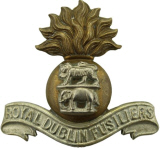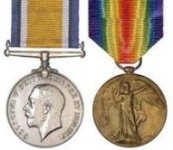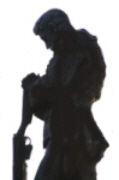



No.28346, Private, Robert Ernest CHAPMAN
Aged 22

|
Born in Great Welnetham in 1896 (3rd qtr Thingoe 4a:778 son of Robert and Eleanor Priscilla CHAPMAN (née THURMOTT)
1901 census...Aged 4, he was at 73 Southgate Street, Bury St.Edmunds with his father Rober CHAPMAN [38] pawnbroker's assistant, born Needham Market; his mother Eleanor [40] born Walsham le Willows; brothers William Frank [8] born Bury St Edmunds and Frederick John [6] born Great Welnetham; sisters Kathleen M [2] born Great Welnetham and Eleanor M [ 2 months] born Bury St.Edmunds. His father died on 21st July 1906 in Bury St.Edmunds. 1911 census...Aged 14, an apprentice grocer, he was at 75 Mill Road, Bury St.Edmunds with his mother and his brother William Frank (general assistant house furnishings); sisters Kathleen Muriel and Eleanor Mary. Brother Frederick, aged 16, a blacksmith, was at Needham Market with his widowed aunt Emma DEARING [77] born Gosbeck and her niece Bessie MULLINER [32] born Crowfield. His mother died in 1914. His brother Frederick died at home on leave in 1916 see here |

|
He enlisted in Ely when resident in Sudbury. 21 March 1918... The German Spring Offensive, the Kaiserschacht:- At 4.40am on 21 Mar 1918 the Germans fired over a million shells over a 50 mile front in a 5 hour period Their shells were both explosive and gas. Further as dawn broke, a thick mist reduced visibility to 25 metres. At 9.35 am, 500,000 German soldiers advanced through the mist. During the day the Dublins withstood the direct attack, but the Germans managed to make an advance on the junction with 66 Division at the side of the salient. They surrounded Ronssoy, and threatened to attack the Dublins from the rear. By midnight the 1st Battalion withdrew through the brown line, which was held by 47 Brigade. They were missing about 600 soldiers from the 1st Battalion when they withdrew. They got to Divisional HQ at Tincourt about 4am to re-group. There were only 5 officers and 90 other ranks left. They took up a position along the road running north-west out of Tincourt. 22 March 1918 - The 1st Dublins occupied the Green Line and by now had 140 men. Orders were given to retire but countermanded and the Bn remained at Tincourt. The retreat continued via Peronne - Doignt - Cappy - Froissy - Eclusier - Mericourt on 27th. 1st Dublins had remained in position to cover the withdrawal, and then moved back to a position in the sunken road between Morcourt and Cerisy at 5pm. A few minutes later the Germans crossed the bridge at Cerisy and attacked them from the rear. So they had to withdraw south to the main road from Peronne to Amiens, east of Lamotte. An unsuccessful counter-attack was organised at 7pm, they moved forward about a mile, but fell back under enfilading machine gun fire. They withdrew to Villers-Bretonneux, which they reached at 11.30pm By 28th at Villers-Bretonneux the battalion was down to 45 men.They were then mered into a group known as the Aubigny Detail Details of who fell, where, were of no consequence under the circumstances so it not surprising the date of Robert's death is so vague. Bearing in mind that the nominal stength of a battalion at the time was around 900 men, the losses were immense. CWGC has 150 of the 1st Bn killed in that period.
detals from https://www.dublin-fusiliers.com/battaliions/1-batt/campaigns/1918-kaisers.html
also commemorated on the Ireland WW1 casualties list and on his brother Frederick's grave in Barking click here to go to the Commonwealth War Graves Commission website for full cemetery/memorial details |